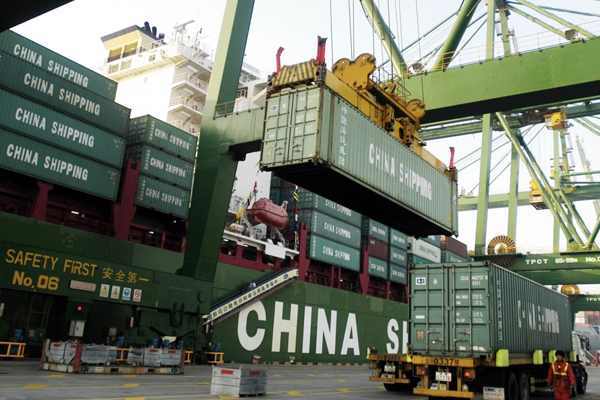
Our Chief Operating Officer, Guy Williams, explores China’s emergence from the coronavirus pandemic and whether a full recovery to pre-COVID-19 productivity levels is possible for the world's second-largest economy:
Manufacturing in China hit a record low in February 2020 due to the COVID-19 outbreaks which affected the whole country. According to the Purchasing Managers Index (PMI), China’s official measure of manufacturing activity, productivity dropped to 37.5 in February from 50 in January. Travel restrictions and the quarantining of almost 60 million people across the country drove activity to a near standstill, as the whole country went into lock-down throughout February. All this had a bigger impact than the financial crash of 2008 and affected some of the world’s biggest consumer brands such as Coca-Cola, Apple, Unilever and Nike, all of whom source millions of products from China every year.
However, China’s economy is showing signs of rebounding. As of mid-March, 90% of China’s markets, shops and malls have re-opened and 70% of SME’s are fully operational. This week the city of Wuhan (where the coronavirus outbreak first began) finally lifted mass lock-down restrictions after more than 70 days. Latest PMI figures show an increase to 52 points in March; significantly up from February and way above the predicted 44.8. China is re-opening for business. But is the world ready to trade?
As COVID-19 sweeps countries across the world, and with uncertainty about a firm ‘end date’ to the pandemic, stock markets have fallen steeply since February and remain on a downward trajectory. As other countries go into lock-down, demand from China’s biggest markets will certainly start to fall in the coming weeks and months. In fact, this may be a sign of a more permanent drop in demand for the world’s second largest economy.
A shift away from over-reliance on Chinese manufacturers was already well underway before the coronavirus pandemic hit. China's rising labour costs and environmental regulations, combined with the uncertainty of tariffs and a looming trade war with the US had driven companies to start sourcing products elsewhere. Countries like Vietnam, Bangladesh, Malaysia and others throughout South East Asia now provide a viable, competitive alternative to China’s manufacturing model. At ASL Global, we increasingly source high quality, low cost marketing products from these countries, and sophisticated supply chains are developing quickly in these blooming markets.
It's worth noting, however, that moving away from Chinese manufacturing isn't as straightforward as it first appears. Many South East Asia countries source raw materials and components from China, so although the manufacturing process may migrate to other markets, there often remains a significant reliance on China further up the supply chain.
Just as worrying for China is a steep slump in demand, as COVID-19 spreads through virtually all of it’s trading partners. There will clearly be a global demand ‘shock’ in April/May as countries remain locked down, and an impending global recession looks likely later in 2020; both of which will hit China’s export sector hard. China’s capacity may return to normal levels soon, but global demand is set to reduce sharply over the coming months, leading to over-capacity in the manufacturing sector and creating a further drag on China’s economy.
The older problem of a US-China trade war remains on the horizon. As the effects of COVID-19 increasingly hit jobs & businesses in the United States, it’s likely the world’s biggest economy will take a more protectionist stance, toughen tariffs and strengthen trade barriers in order to support & stimulate their domestic trade markets. Especially if Trump wins another term as US President in November.
Still, Q2 2020 looks fairly positive for China. New Covid-19 cases have fallen to a very small number of cases each day, allowing factories to resume close-to-normal conditions. And community lockdowns have been significantly relaxed, with consumers returning to shops and restaurants. However, new cases are still being reported and official numbers coming out of China should be treated with caution. China’s own National Bureau of Statistics (NBS) warns that economic operations are not back to normal levels and there remains relatively large pressures on production.
Overall, its good to see China getting back to normal in terms of manufacturing capability and consumer behaviour. It’s a blessing that they seem to be through the worst of the COVID-19 outbreak, also providing an encouraging model for other countries who are yet to hit their coronavirus peak. But, along with everyone else, China faces a tough battle to recover from this unprecedented pandemic, both economically and socially.
We work with some of the world's biggest consumer brands and they are all firmly focused on Q3/4 of 2020. Q2 has been completely written off in terms of marketing activity, but it appears that demand is building for later in the year. If, as is hoped for, the world starts to move past the initial coronavirus crisis by the Summer, there could well be a significant wave of new activity, which should impact by the end of this year.
Longer-term factors such as increased competition from other South East Asian countries and tariffs remain significant challenges for China in the future. Short-term, it may just be forced to wait for other countries to work through their own COVID-19 curves before they see demand start to rise again.
#globalsupplychains #fareastsourcing
ASL Global sources marketing & promotional goods for the worlds biggest brands. Contact us today to see how we use the best new ideas to help create and execute exciting marketing campaigns which engage consumers.


Discover more about our ONE WORLD initiative







